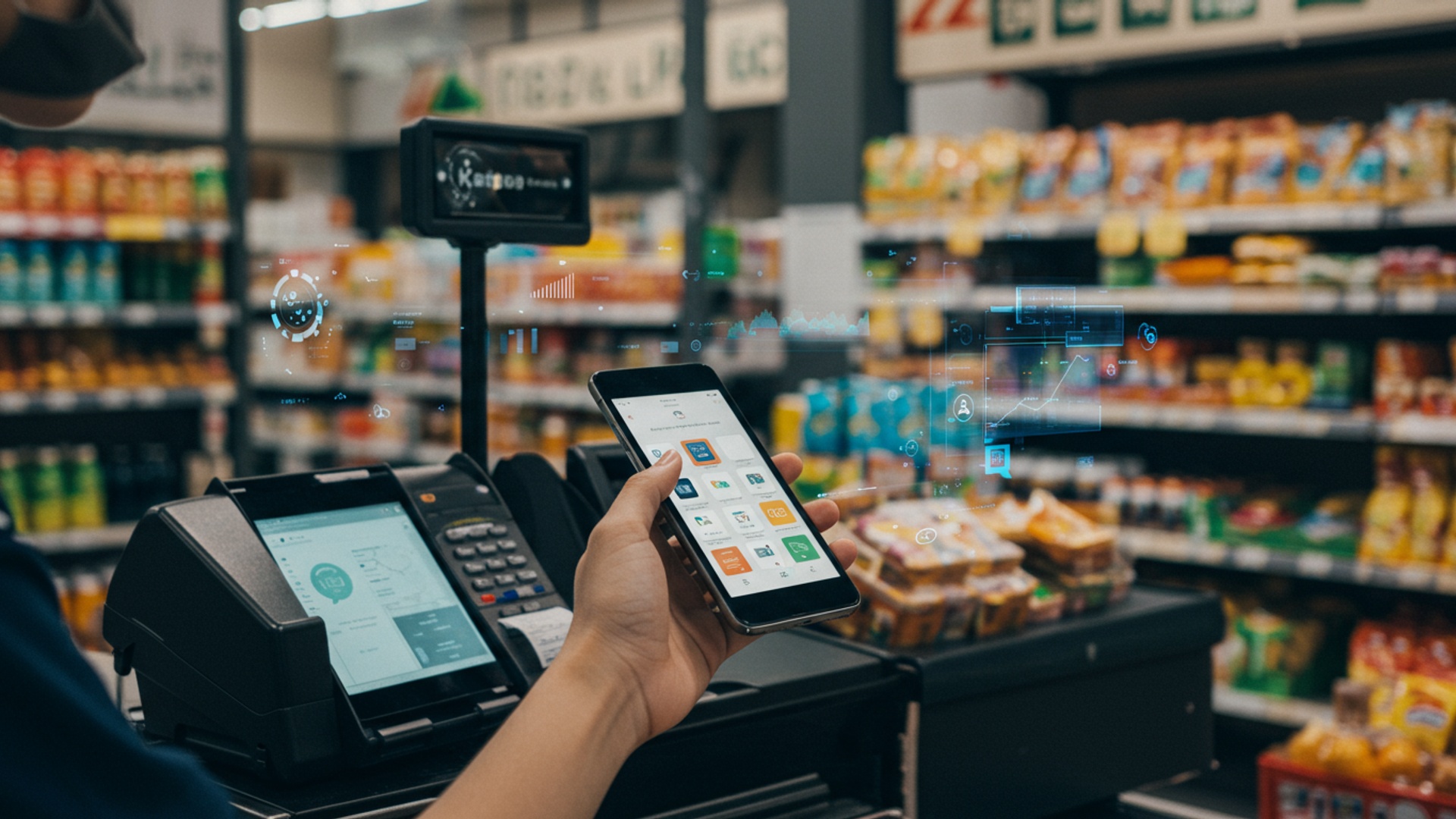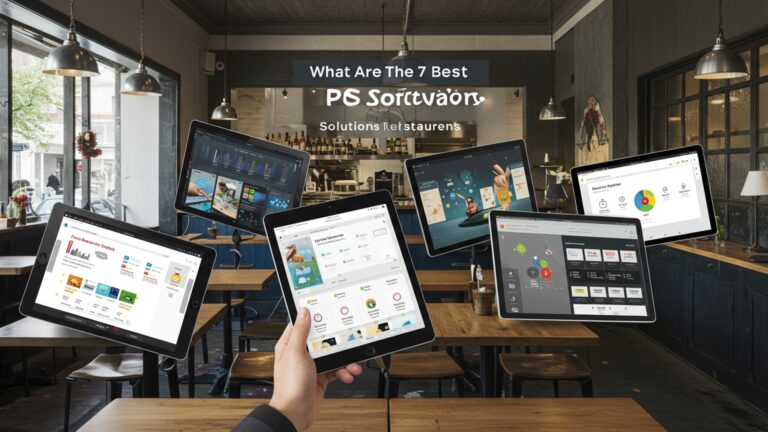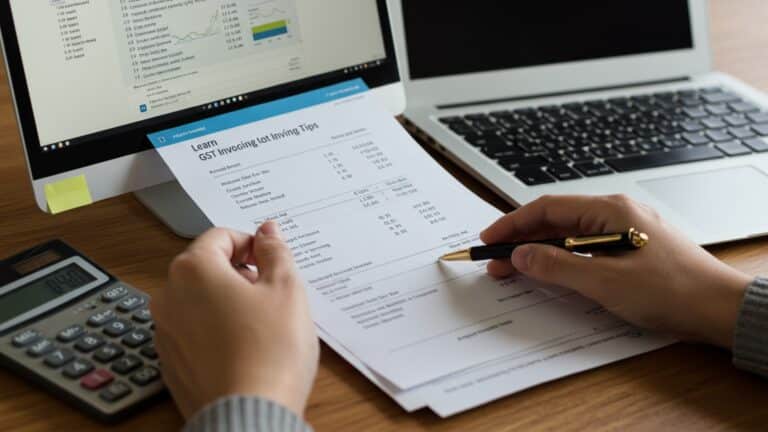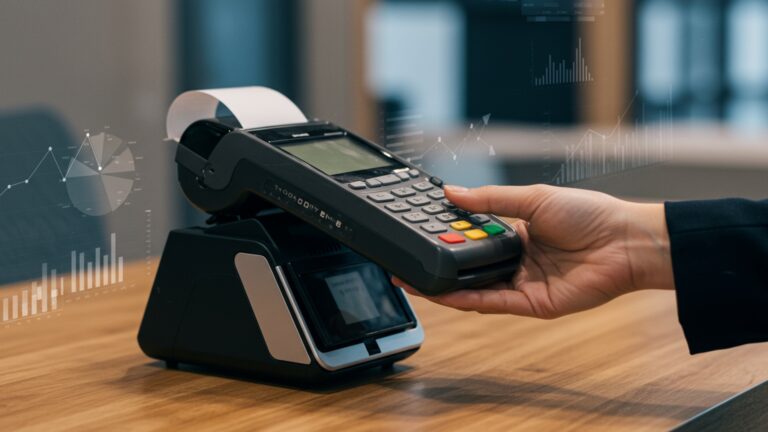Learn How 10 Mobile POS Billing Apps Can Boost Grocery Efficiency
The modern grocery landscape demands unparalleled agility, with consumers expecting swift checkouts and flexible shopping options like curbside pickup. Traditional fixed POS systems often create bottlenecks, hindering operational fluidity and real-time inventory management. The strategic adoption of a robust mobile POS billing app for grocery operations, such as those leveraging cloud-based platforms for instant data synchronization, revolutionizes efficiency. These advanced applications empower staff to process transactions anywhere on the shop floor, update stock levels immediately after a sale. even manage loyalty programs from a handheld device, directly impacting customer flow and reducing wait times. This shift from static terminals to dynamic, portable solutions is a critical upgrade for optimizing daily retail performance and adapting to evolving market demands.
Written by PromotoAI
promotoai generate content that ranks

Understanding the Power of a Mobile POS Billing App for Grocery Stores
In today’s fast-paced retail environment, grocery stores face immense pressure to operate efficiently, enhance customer satisfaction. manage complex inventory. Traditional point-of-sale (POS) systems, often tethered to a counter, can create bottlenecks and limit flexibility. This is where a mobile POS billing app for grocery operations steps in as a game-changer. But what exactly is it. why is it becoming indispensable for modern grocers?
A Mobile POS (Point of Sale) system is essentially a portable device, such as a smartphone or tablet, equipped with software that allows businesses to process transactions, manage inventory. handle various other operational tasks from anywhere within the store. For grocery stores, this translates into unprecedented flexibility and efficiency.
The core components of a typical mobile POS setup include:
- Mobile Device
- POS Software
- Payment Processor
- Barcode Scanner
- Receipt Printer
A smartphone or tablet (iOS, Android) that runs the POS application.
The application itself, designed for retail operations, often cloud-based.
Integrated hardware (like a card reader) and software to accept various payment methods.
Often a built-in camera function or an external Bluetooth scanner for quick product identification.
A portable Bluetooth printer or an option for email/digital receipts.
The shift from stationary terminals to a mobile POS billing app for grocery stores isn’t just about convenience; it’s about fundamentally transforming how a grocery business operates, from checkout to inventory management, leading to significant boosts in efficiency and profitability.
1. Accelerating Checkout Speeds and Reducing Queues
One of the most immediate and impactful benefits of a mobile POS billing app for grocery is its ability to significantly speed up the checkout process. Long queues are a major pain point for customers and a drain on staff morale. With mobile POS devices, staff can:
- Process Transactions Anywhere
- Line Busting
- Self-Checkout Assistance
Instead of customers waiting for an open register, staff can move through aisles or designated express areas, scanning items and taking payments on the spot. This is particularly useful during peak hours or for smaller baskets.
During busy periods, employees can use handheld devices to pre-scan items for customers waiting in line, reducing the time spent at the main register. This proactive approach significantly cuts down wait times and improves the customer experience.
While not a direct billing function, a mobile POS allows staff to quickly assist customers at self-checkout kiosks who encounter issues, ensuring a smooth process.
Imagine a Saturday morning rush where customers are traditionally bottlenecked at the main registers. With staff equipped with a mobile POS, they can open up ‘pop-up’ checkout points, significantly easing congestion and ensuring a faster, more pleasant shopping experience for everyone.
2. Real-time Inventory Management and Stock Accuracy
Effective inventory management is the backbone of a successful grocery store. A mobile POS billing app for grocery integrates sales data directly with inventory, offering real-time insights that were previously difficult to obtain.
- Instant Stock Updates
- Automated Reordering
- Efficient Stocktakes
- Waste Reduction
Every sale processed through the mobile POS immediately updates the central inventory system. This means managers always have an accurate picture of what’s on shelves and what’s in the backroom.
Many advanced mobile POS systems can be configured to trigger automatic reorder alerts or even place orders with suppliers when stock levels hit a predefined minimum. This prevents stockouts of popular items and reduces overstocking of slow-moving goods.
Staff can use the mobile device’s scanner to perform inventory counts directly on the shop floor or in storage areas, eliminating manual data entry errors and speeding up the entire process.
By accurately tracking perishables and their sell-by dates, the system can help identify items nearing expiration, allowing for timely promotions or removal, thereby minimizing waste.
This level of precision in inventory management ensures that products are always available, reduces capital tied up in excess stock. minimizes losses due to expired or unsellable goods.
3. Enhancing Customer Experience and Loyalty Programs
Beyond speed, a mobile POS billing app for grocery can significantly elevate the overall customer experience and foster loyalty.
- Personalized Service
- Seamless Loyalty Integration
- Digital Receipts
- Addressing Queries on the Spot
Staff can access customer purchase history, loyalty points. preferences directly on their mobile device. This allows for personalized recommendations or targeted promotions right at the point of interaction.
Customers can easily scan their loyalty cards (physical or digital) or provide their details. points are automatically applied or redeemed during the mobile transaction. This removes friction often associated with loyalty programs at traditional checkouts.
Offering customers the option for email or SMS receipts not only saves paper but also provides a convenient way for them to track their purchases and for the store to build a valuable customer contact list for marketing.
If a customer has a question about an item’s price, availability, or nutritional insights, staff can quickly look it up on the mobile POS, providing instant answers without needing to leave the customer.
By empowering staff with details and flexibility, a mobile POS transforms customer interactions into opportunities for engagement and satisfaction.
4. Reducing Errors and Improving Billing Accuracy
Manual processes are prone to human error, which can lead to lost revenue, incorrect inventory. dissatisfied customers. A mobile POS billing app for grocery significantly mitigates these risks.
- Barcode Scanning
- Automated Discounts and Promotions
- Real-time Price Updates
- Clear Itemization
The primary method of item entry is barcode scanning, virtually eliminating price entry errors. This ensures customers are charged correctly and inventory is debited accurately.
The system automatically applies eligible discounts, coupons. promotional pricing at the time of sale, removing the need for staff to remember complex offer details and preventing missed savings for customers or incorrect charges for the store.
Price changes can be updated centrally and instantly reflected across all mobile POS devices, ensuring consistency and accuracy across the entire store.
Detailed itemized receipts, whether printed or digital, provide transparency for both the customer and the store, making it easier to track purchases and resolve any discrepancies.
Accuracy in billing is paramount for trust and efficient operations. a mobile POS provides the tools to achieve it consistently.
5. Robust Sales Reporting and Actionable Analytics
Data is power. a mobile POS billing app for grocery collects a wealth of sales data that can be transformed into actionable insights for strategic decision-making.
- Comprehensive Sales Reports
- Peak Hour Identification
- Product Performance Analysis
- Customer Segmentation
- Trend Identification
Generate reports on daily, weekly, monthly, or annual sales, broken down by product, category, time of day, or even individual staff member.
assess sales patterns to identify peak shopping times, allowing managers to optimize staffing levels and product placement.
comprehend which products are top sellers, which are slow-moving. which might need promotional pushes or discontinuation. This directly informs purchasing decisions.
For stores with integrated loyalty programs, the data can help segment customers based on purchasing habits, enabling highly targeted marketing campaigns.
Spot emerging trends in customer preferences or seasonal demands, allowing the grocery store to adapt its offerings proactively.
This level of data analysis moves a grocery store from reactive management to proactive strategy, optimizing everything from stock to marketing.
6. Seamless Multi-Channel Sales Integration
Modern grocery stores often operate across multiple channels – in-store, online for pickup, or delivery. A sophisticated mobile POS billing app for grocery can integrate these channels for a unified operational view.
- Unified Inventory
- Click-and-Collect Facilitation
- Delivery Management
Whether an item is sold in-store via a mobile POS or online, the inventory updates in real-time across all channels, preventing overselling or stock discrepancies.
For stores offering online ordering and in-store pickup, the mobile POS can be used to quickly locate, verify. process the handover of pre-ordered items, streamlining the pickup process.
Some mobile POS systems can integrate with delivery platforms or manage in-house delivery logistics, including order tracking and payment processing upon delivery.
This integration ensures a consistent customer experience and streamlined operations, regardless of how a customer chooses to shop.
7. Enhanced Staff Mobility and Operational Flexibility
The very nature of a mobile POS offers unparalleled flexibility for staff, impacting various aspects of grocery store operations.
- Floor Assistance
- Department-Specific Billing
- Pop-Up Sales Points
- Reduced Hardware Costs
Staff can move freely around the store, assisting customers with product details, stock checks, or even completing a sale right in the aisle. This transforms employees from static cashiers into active floor assistants.
In larger grocery stores with specialized departments (e. g. , deli, bakery, fresh produce), a mobile POS allows for dedicated billing within that department, improving service and reducing reliance on central checkouts.
For seasonal sales, special events, or outdoor market stalls, a mobile POS allows a grocery store to set up temporary billing stations quickly and efficiently, extending their reach.
By leveraging existing smartphones or tablets, stores can reduce the need for expensive, fixed POS hardware, especially for smaller or temporary setups.
This mobility empowers staff to be more responsive and productive, directly contributing to overall efficiency.
8. Flexible Payment Options and Security
Customers expect diverse and secure payment options. A mobile POS billing app for grocery typically supports a wide array of payment methods, enhancing convenience and security.
- Contactless Payments
- Digital Wallets
- Traditional Card Payments
- Gift Cards & Store Credit
- Enhanced Security
Accept tap-and-go payments via NFC-enabled cards, smartphones (Apple Pay, Google Pay). smartwatches, offering speed and hygiene.
Seamless integration with popular digital wallet services, catering to tech-savvy customers.
Still supports chip-and-PIN and swipe options for all major credit and debit cards.
Manage and process store-specific gift cards and credit directly through the app.
Many mobile POS systems use advanced encryption and tokenization for payment processing, reducing the risk of fraud and ensuring PCI DSS compliance. This protects both the customer and the business from data breaches.
Offering a variety of secure payment methods caters to a broader customer base and speeds up transaction times.
9. Streamlined Employee Management and Performance Tracking
A comprehensive mobile POS billing app for grocery can extend its utility beyond transactions to include robust employee management features.
- Time Tracking
- Sales Performance Monitoring
- Role-Based Access
- Training and Onboarding
Employees can clock in and out directly via the mobile POS, simplifying payroll processing and ensuring accurate work hour tracking.
Track individual employee sales performance, average transaction value. customer service metrics. This data can be used for performance reviews, training needs. incentive programs.
Assign different levels of access and permissions to staff based on their roles (e. g. , cashier, manager, stock clerk), ensuring data security and operational control.
The intuitive nature of many mobile POS interfaces can simplify training for new employees, reducing the time and resources required for onboarding.
By integrating these functions, the mobile POS becomes a central hub for managing human resources and optimizing staff productivity.
10. Scalability and Future-Proofing Your Grocery Business
Investing in a mobile POS billing app for grocery is not just about current efficiency; it’s about preparing your business for future growth and technological advancements.
- Easy Expansion
- Cloud-Based Advantages
- Integration Ecosystem
- Adaptability to New Technologies
As your grocery store grows, opens new locations, or adds more checkout points, scaling a mobile POS system is often as simple as adding more devices and user licenses, without the need for extensive hardware installation.
Most modern mobile POS systems are cloud-based, meaning software updates, new features. data backups are handled automatically by the provider, ensuring your system is always up-to-date and secure.
Many mobile POS platforms offer APIs and integrations with other essential business tools like accounting software, e-commerce platforms. CRM systems, creating a powerful, interconnected operational ecosystem.
Mobile platforms are inherently more agile and adaptable to emerging technologies, whether it’s new payment methods, IoT devices, or AI-driven analytics.
A mobile POS provides a flexible and robust foundation that can evolve with your grocery business, ensuring long-term efficiency and competitiveness.
Choosing the Right Mobile POS Billing App for Your Grocery Store
With numerous options available, selecting the ideal mobile POS billing app for grocery requires careful consideration. Here’s a comparison of key features and considerations to guide your decision:
| Feature/Consideration | Benefit for Grocery Stores | Key Questions to Ask |
|---|---|---|
| Inventory Management | Real-time tracking, multi-location support, vendor management, automated reordering, waste reduction. | Does it handle perishables and variable weights? Can it integrate with my existing inventory database? |
| Payment Processing | Accepts diverse payment types (contactless, digital wallets, chip, swipe), secure transactions, transparent fees. | Are the transaction fees competitive? Is it EMV compliant and PCI DSS secure? |
| Hardware Compatibility | Works seamlessly with existing or preferred mobile devices (iOS/Android), barcode scanners, receipt printers. | What hardware is required or recommended? Is it compatible with my current devices? |
| Scalability | Supports growth, multiple stores. additional users without significant overhauls. | Can it easily add more registers or locations as my business expands? |
| Reporting & Analytics | Comprehensive sales data, customer insights, product performance, custom report generation. | What kind of reports are available? Can I customize them for my specific needs? |
| Customer Management | Loyalty programs, customer profiles, purchase history, marketing integrations. | Does it support a robust loyalty program? Can it segment customers for targeted promotions? |
| Offline Mode | Allows transactions to continue even without internet connectivity, syncing later. | What happens if the internet goes down? Can I still process sales? |
| Ease of Use | Intuitive interface, minimal training required for staff. | How quickly can new staff be trained on the system? Is the interface user-friendly? |
| Support & Training | Reliable customer support, documentation. training resources. | What kind of customer support is offered (24/7, phone, email)? Are there training materials? |
| Pricing Structure | Clear understanding of subscription fees, transaction costs. any additional charges. | Is the pricing transparent? Are there hidden fees for features or integrations? |
Implementing a Mobile POS System: Best Practices
Transitioning to a mobile POS billing app for grocery requires a strategic approach to ensure a smooth rollout and maximize benefits. Here are some actionable best practices:
- Thorough Research and Demo
- Phased Implementation
- Comprehensive Staff Training
- Robust Network Infrastructure
- Data Migration and Integration
- Regular Maintenance and Updates
- Collect Feedback
Don’t rush into a decision. Request demos from several providers, test their systems with your specific grocery products. ensure all your critical operational needs are met. Pay close attention to how they handle variable-weight items, produce codes (PLU). bulk pricing.
Consider a phased rollout. Start with a small number of mobile POS devices or in a specific department before extending it across the entire store. This allows your team to adapt and identify any unforeseen challenges.
Invest in thorough training for all staff members who will be using the system. This includes cashiers, stock clerks. managers. Ensure they comprehend not just how to use the app but also the benefits it brings to their daily tasks and the overall business.
A reliable Wi-Fi network is crucial for a cloud-based mobile POS. Ensure your store has strong, consistent coverage throughout, especially in areas where transactions will occur. Consider a backup internet connection.
Plan carefully for migrating existing product data, customer data. inventory levels into the new system. If possible, integrate the mobile POS with your existing accounting software, CRM, or e-commerce platforms to avoid data silos.
Stay on top of software updates provided by your mobile POS vendor. These often include new features, security enhancements. bug fixes. Regularly back up your data, even if it’s cloud-based, as an extra precaution.
Encourage staff and customer feedback during and after implementation. Their insights can be invaluable for fine-tuning the system, addressing pain points. identifying opportunities for further optimization.
By following these guidelines, grocery stores can successfully leverage a mobile POS billing app to dramatically enhance their operational efficiency, improve the customer experience. secure a competitive edge in the market.
Written by PromotoAI
promotoai generate content that ranks
Conclusion
Embracing mobile POS billing apps is no longer a luxury but a strategic necessity for modern grocery stores. As we’ve explored, these 10 apps fundamentally transform operations, moving beyond mere transaction processing to offer real-time inventory synchronization, swift QR code payments. invaluable customer insights. I’ve personally observed how a seamless checkout experience, powered by a robust mobile POS, significantly reduces queues and elevates customer satisfaction, directly impacting repeat business. Therefore, I urge you to meticulously evaluate your store’s unique needs, focusing on features like offline capabilities and integration with existing systems, rather than just the lowest price point. The ultimate goal isn’t just speed; it’s about future-proofing your business in an increasingly digital retail landscape. Dive in, experiment. empower your grocery store to thrive with unparalleled efficiency and a truly modern approach.
More Articles
Choose Wisely 10 Best POS Software for Your Grocery Store in India
Discover 7 Budget-Friendly POS Software for Every Grocery Store Business
Learn 8 Smart Ways POS Software Streamlines Inventory Management
5 Essential Features Your POS Billing Software Needs for GST Compliance
Discover the 7 Best POS Software Solutions in India for Your Business
Written by PromotoAI
promotoai generate content that ranks
FAQs
Why should a grocery store even consider mobile POS apps?
They’re a game-changer for efficiency! Mobile POS apps drastically speed up the checkout process, reduce manual errors. give you better control over your inventory, ultimately boosting your store’s overall productivity and customer satisfaction.
How exactly do these apps make daily grocery operations smoother?
Think faster checkouts with quick scanning, real-time inventory updates so you always know what’s on shelves. easier sales reporting. They cut down on paperwork and help manage customer transactions much more efficiently than traditional systems.
Are these mobile POS systems complicated to set up or use for my staff?
Generally, no. Most modern mobile POS apps are designed with user-friendliness in mind, often running on standard smartphones or tablets. Training staff is usually straightforward, as the interfaces are intuitive and easy to navigate.
Can these apps really help me keep better track of my grocery inventory?
Absolutely! One of their biggest strengths is real-time inventory management. You can track stock levels as items are sold, get alerts for low stock. even streamline ordering from suppliers. This helps prevent both overstocking and empty shelves.
Do I need a ton of expensive new equipment to use these mobile billing apps?
Not necessarily! Many mobile POS solutions can run on devices you might already have, like smartphones or tablets. While some stores opt for additional accessories like barcode scanners or compact printers, the core functionality often requires minimal new hardware investment.
How do mobile POS apps improve things for my customers?
Your customers will love the shorter lines and quicker transactions. Some apps also support loyalty programs, digital receipts. various payment options, making their shopping experience more convenient and pleasant.
Which types of grocery stores get the most out of using these mobile POS solutions?
From small convenience stores and local delis to medium-sized supermarkets, pretty much any grocery business looking to modernize and streamline its operations can benefit. They’re especially helpful for stores aiming to reduce checkout wait times and improve inventory accuracy.



